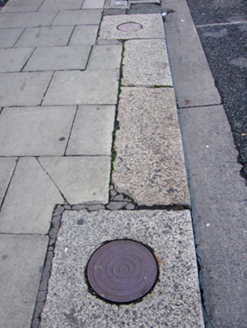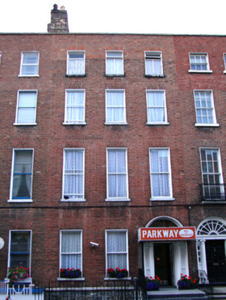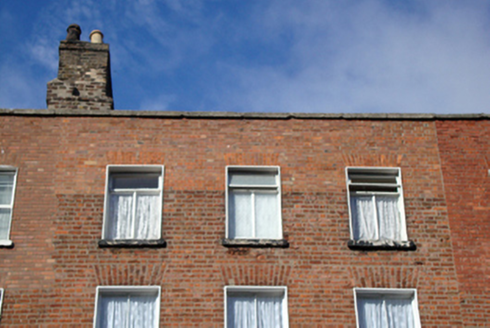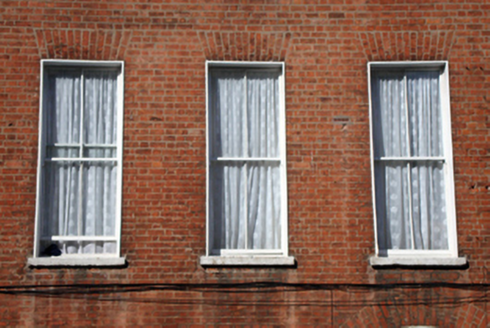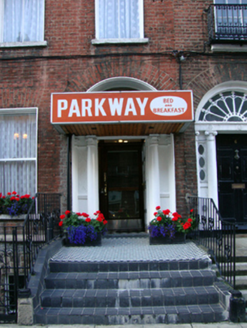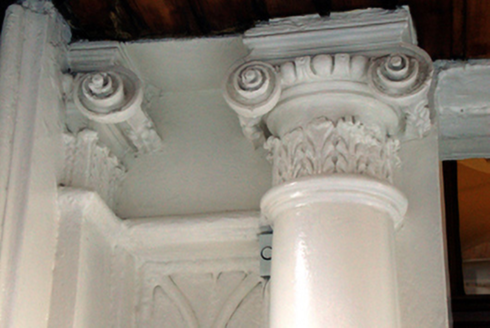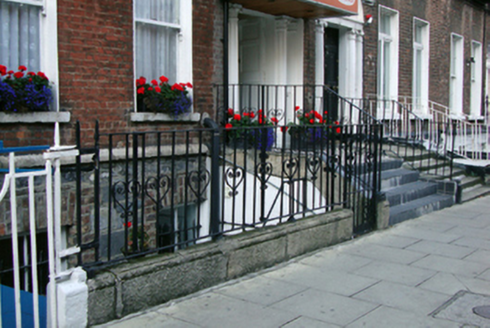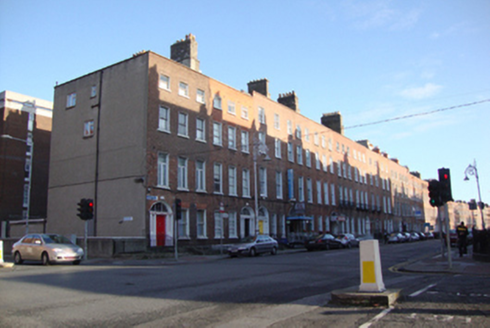Survey Data
Reg No
50010869
Rating
Regional
Categories of Special Interest
Architectural, Artistic
Original Use
House
In Use As
Guest house/b&b
Date
1780 - 1800
Coordinates
315860, 235378
Date Recorded
10/10/2011
Date Updated
--/--/--
Description
Terraced three-bay four-storey house over basement, built c.1790. Now in use as guesthouse. Hipped roof in U-plan with two chimneystacks with terracotta pots on party wall to west behind re-built granite-capped parapet wall. Red brick walls laid in Flemish bond to granite plinth course over exposed limestone basement, partly rebuilt to top floor, and cement-rendered to rear elevation. Gauged brick square-headed window openings with painted patent reveals to upper floors and exposed brick reveals to basement, all with granite sills, those to ground floor being slightly narrower pair. Replacement timber sliding sash windows throughout, two-over-two pane to basement, first and second floors, one-over-one pane to ground fllor, and replacement timber T-pane arrangement to top floor. Replacement uPVC windows to rear. Gauged brick segmental-headed door opening with painted stone door surround comprising: engaged Corinthian columns and responding pilasters with original diamond-tracery sidelights flanking replacement timber and glazed door. Cornice linted obscured by modern over-sailing plastic fasciaboard and plain fanlight. Door opens onto mosaic-tiled platform and three steps bridging basement flanked by replacement mild steel railings returning on granite plinth wall to west to enclose basement area. Original granite kerbstones with two inset coal hole covers with simple circular decoration.
Appraisal
No. 5 is part of a unified terrace of red brick four-storey Georgian town houses over basements on the north side of Gardiner Place, and the south side of the street is laid out in a similar fashion. An interesting feature of the terrace is that the central block parapet is raised by several courses, and many of the houses have two coal hole covers. This house has a good doorcase, and the retention of timber sash windows to the front elevation enhances the architectural heritage quality of the building. The stone plinth is retained to the basement area. Gardiner Place was developed by Luke Gardiner II, in c.1790, as an extension of Gardiner's Row, which linked Rutland Square (Parnell Square) with the new and fashionable Mountjoy Square. Gardiner's legacy also included the laying out of Gardiner Row (1773), Mountjoy Square (1790), Gardiner Street (1792) and many other streets surrounding Mountjoy Square. Although built as a residential street, Gardiner Place was largely inhabited by legal professionals and doctors in the mid-nineteenth century, and as tenements, social housing and guest houses in the twentieth century.
